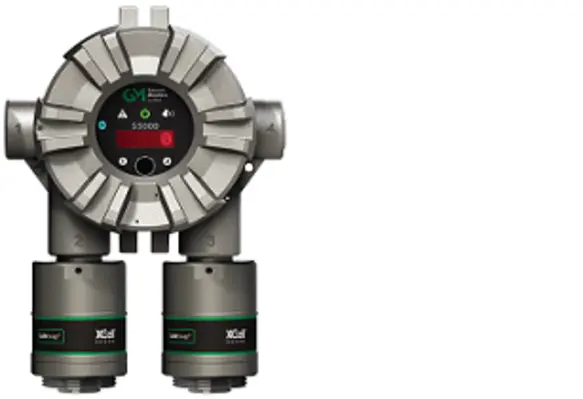Point Gas Detectors (PGD) are widely used in industries to detect the presence of hazardous gases, protecting workers and facilities
PGDs are installed at specific locations where there’s a high probability of gas leaks, such as near pipelines, valves, and storage tanks. However, gas leaks may go undetected when point detectors are used on their own, especially if the sensors are not “fail-safe”, meaning that if the sensor cannot detect gas for any reason, it will not give a fault signal.
To increase the probability of detecting dangerous gas leaks, particularly for high-risk applications found on oil and gas plants, “additional layers of protection” (ALP) are recommended.
Early detection of pressurised gas leaks – at the speed of sound
The Ultrasonic Gas Leak Detector (UGLD) provides the fastest detection possible, as it listens for the sound signature produced by a pressurised gas leak and immediately initiates an alarm. As UGLDs do not have to wait for the gas cloud to migrate from the leak source to the sensor, it provides valuable time (often many minutes) to take action. It is not recommended to shut down after the UGLD goes into alarm, but to monitor the other detectors in the zone for signs of a gas leak. As soon as other detectors in the area start measuring gas, well before they would normally give an alarm, action can be taken. The Observer-i from MSA Safety is the third generation of UGLD, offering advanced features including “plug-and-play” installation.
Another excellent ALP is an Open Path Gas Detector (OPGD)
Open Path Gas Detectors are designed to detect gas leaks over a large area. Various models are available for the detection of hydrocarbon and toxic gases.
Infrared based OPGDs detect a wide range of hydrocarbon gases and laser-based units detect a single specific target gas. Most infrared systems measure in the range of 0 to 5 LEL.metres with a minimum alarm threshold on 0.5 or even 1.0 LEL.metre. To help detect smaller small concentrations of gas, the IR5500 from MSA can also measure in ppm.metres. The Senscient ELDS™ from MSA can also detect gas leaks in the ppm.metre range, offering faster detection and alarms.
Summary
For high-risk applications, the optimum solution for the detection of pressurised gas leaks is Point Gas Detectors + Ultrasonic Gas Leak Detectors + Open Path Gas Detectors. Contact MSA to find out how we can help you detect gas leaks more reliably.









